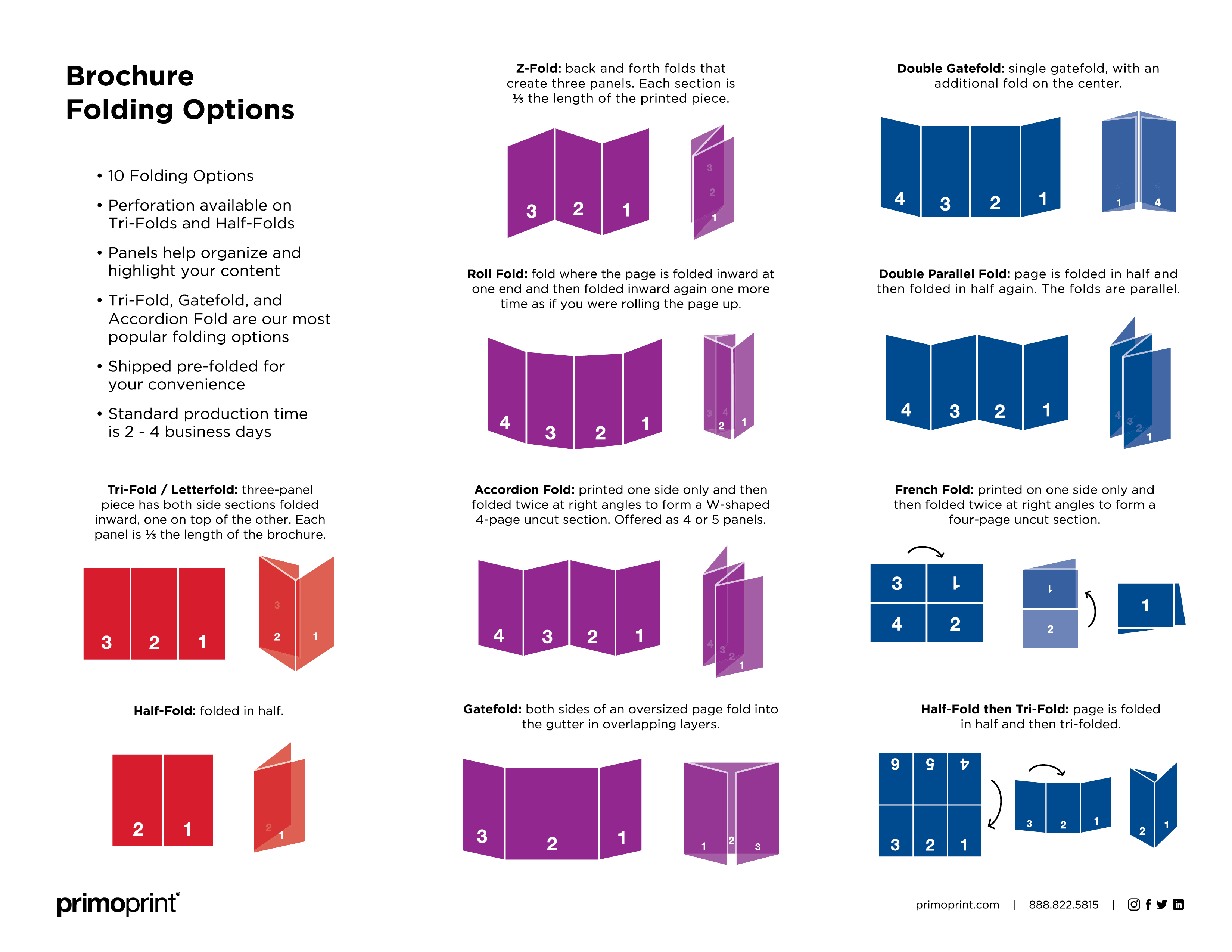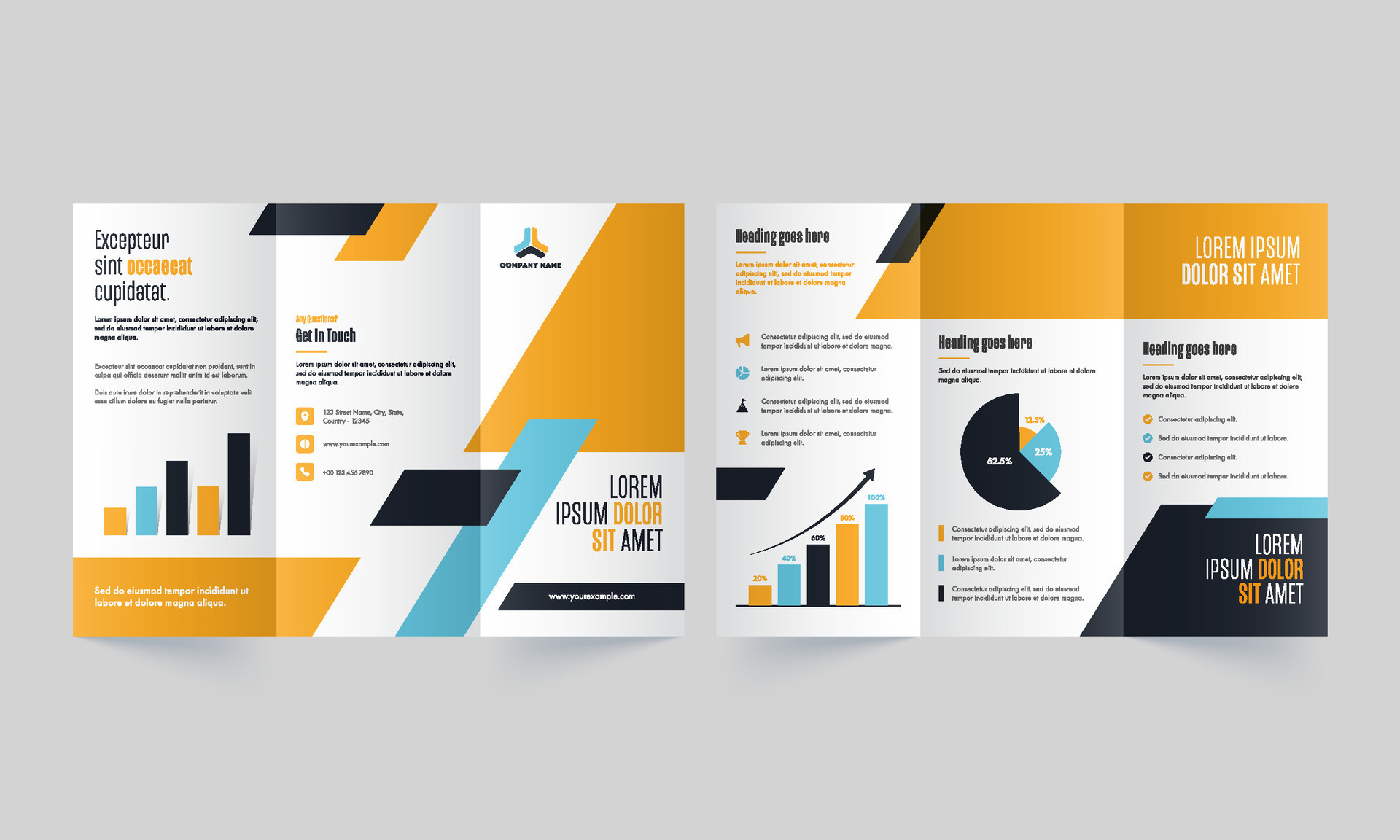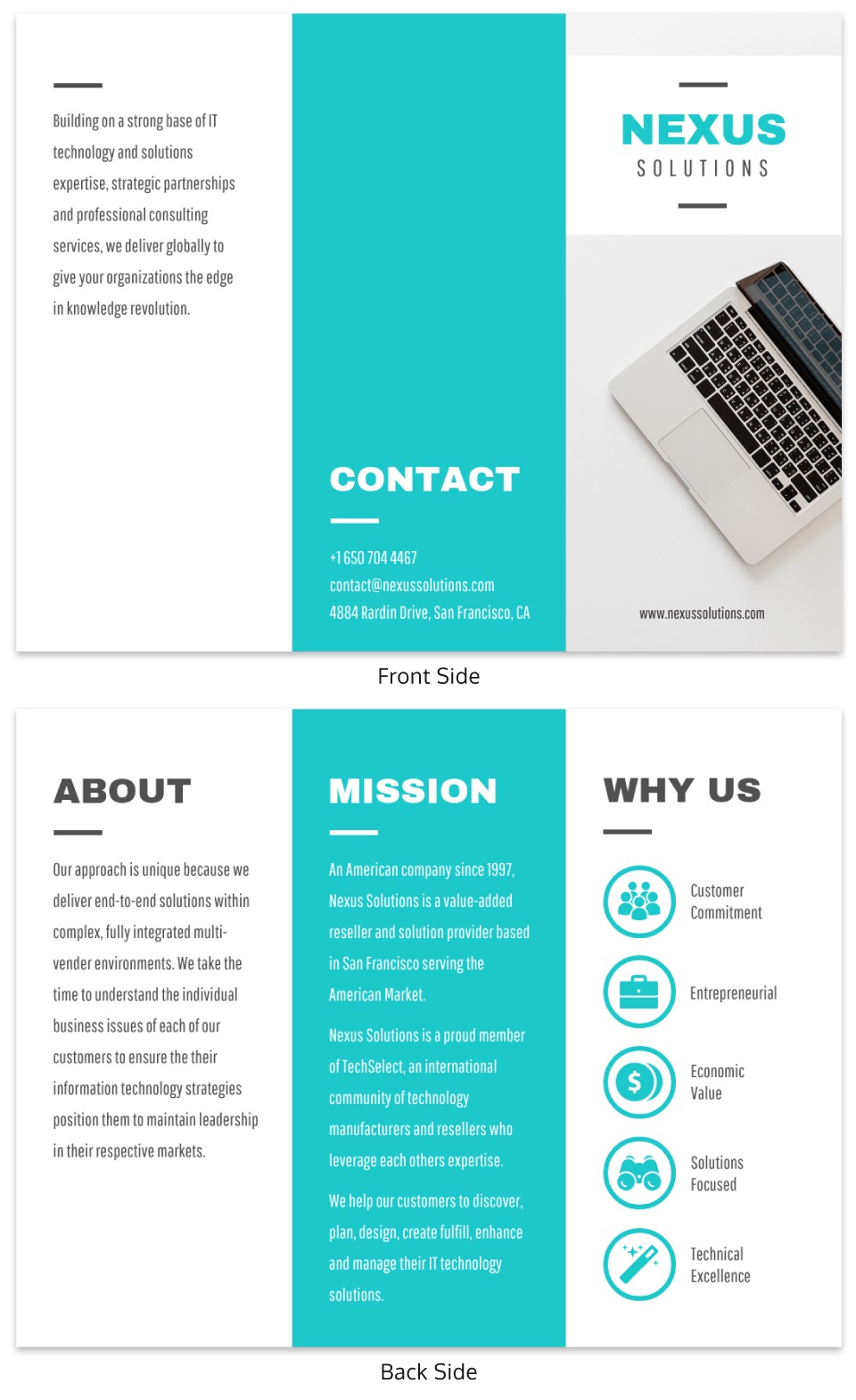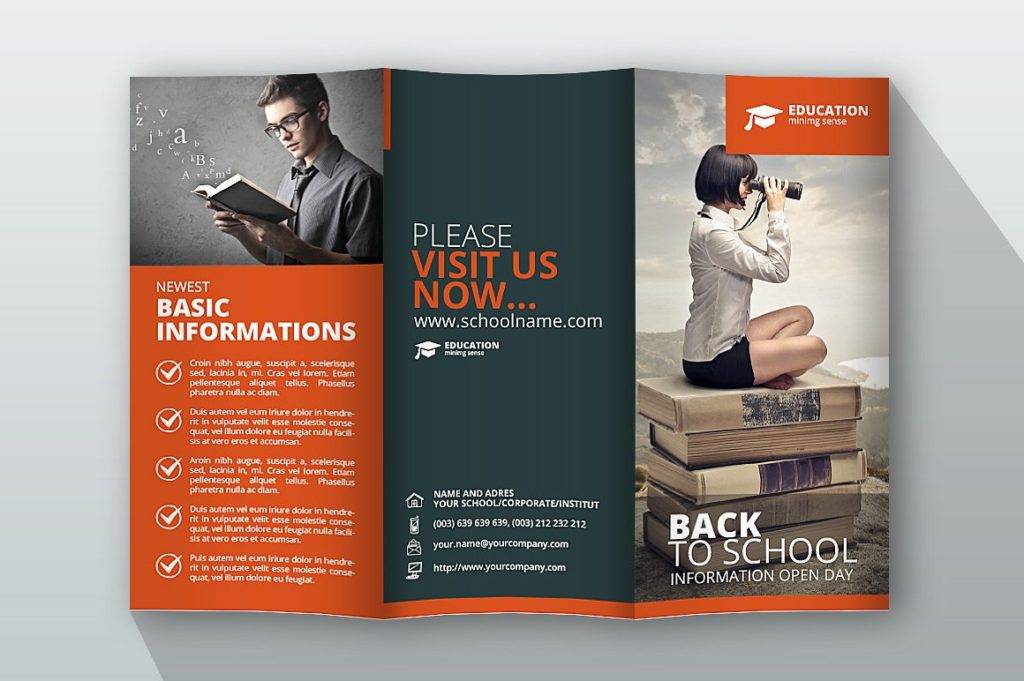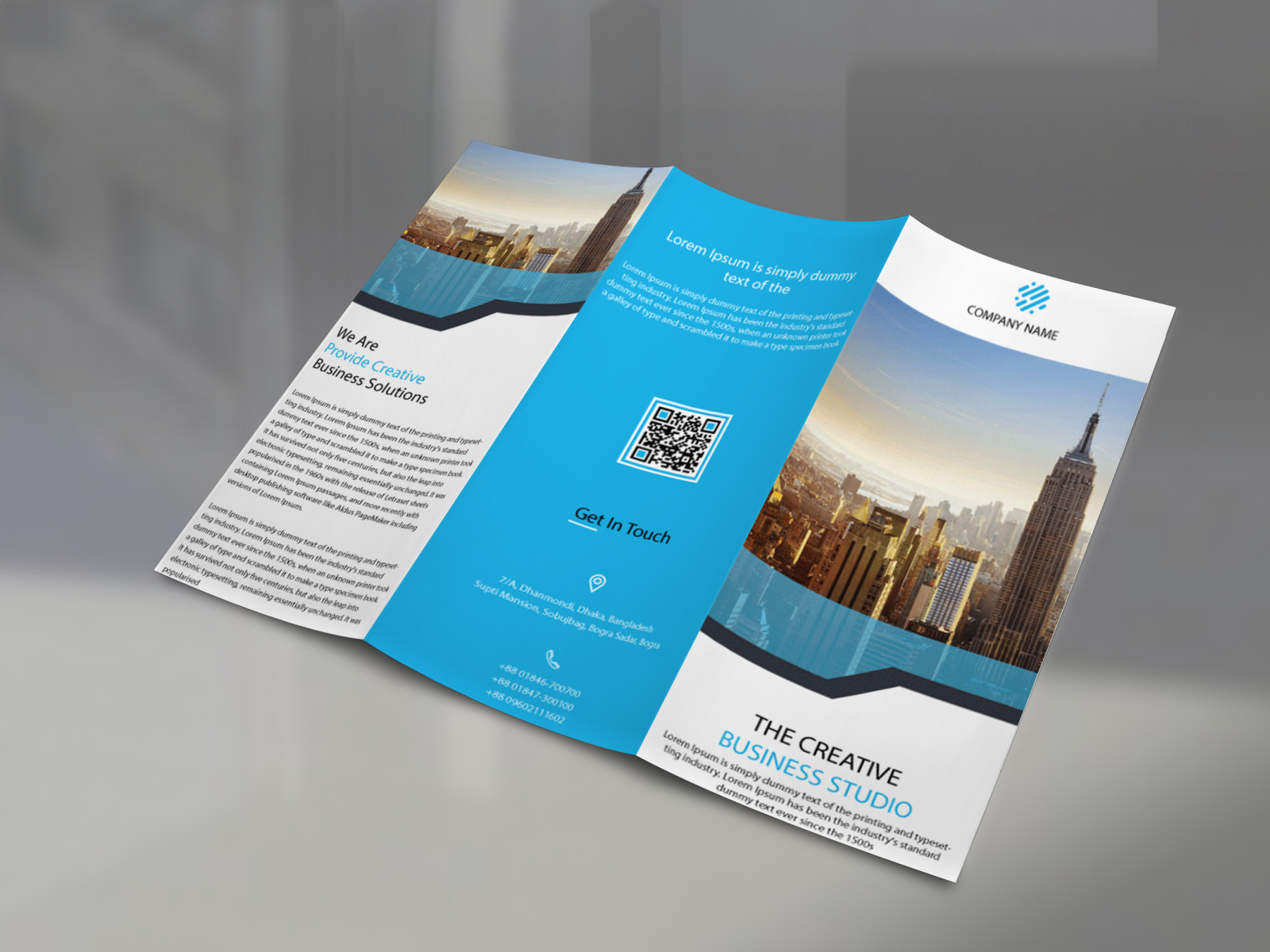Back Panel Of Brochure
Back Panel Of Brochure - Learn how to design a trifold brochure for print. If used as a direct mail piece, this back section reserves a place for the mailing address and stamp. The back panel should briefly summarize the products/services offered and include the company name, address, phone number, and website. Be sure your brochure meets all postal regulations. So let’s take a closer look at what makes up a great brochure. They are often compared to booklets and have limited pages, but they offer ample space for colorful images and text information. • is your audience specialized or familiar with your subject, or are they a general audience, not in the field or trade? If your brochure is digital, add interactive elements to it. The purpose of the cover is to grab attention and get the reader to open your brochure. Before designing a brochure, it is essential to know your brand personality, define your ideal customer, develop your message, and determine your metrics. The outside back panel is usually reserved for contact info, the logo, or possibly a map. Keeping these panels free of excessive content will give your folded brochure a clean, professional appearance. Then answer it when the brochure is completely opened. So use a benefit headline, emotional appeal, or a provocative question. Cd booklets often are designed as accordion folds so that they fold neatly into the cd case and can expand with many panels of content. The aim of the front flap is to make the reader open the brochure and include a line or two of copy that promises a benefit. • is your audience specialized or familiar with your subject, or are they a general audience, not in the field or trade? This document provides information and templates for customizing the back and inside panels of a brochure. Develop a singular theme for your brochure and stick to it. For the back of the brochure, prepare a solid call to action (cta) and contact details. The back of the brochure should include a strong call to action, encouraging readers to take the next step, as well as your contact information and website for further inquiries or purchases. The brochure format typically includes a front cover with title, heading, logo, purpose, body of message, and a summary and contact details in the back outside panel. The. Text and design should be used sparingly on the front and back panels. Consider the following to help you gather the information needed. What is the back panel of a brochure? The post office has regulations for mailing items without an envelope; The back cover of the brochure should conclude the information with a clear, yet powerful call to action. They are often compared to booklets and have limited pages, but they offer ample space for colorful images and text information. Develop a singular theme for your brochure and stick to it. With your readers emotionally stimulated, the next step is to present your message or offering in detail and drive it home. The outside back panel is usually reserved. So let’s take a closer look at what makes up a great brochure. The post office has regulations for mailing items without an envelope; Because the back panel is part of the brochure inside, it reduces the inside design to only two panels. The final two panels, the back flap and the middle back panel, should contain information that encourages. If your brochure is digital, add interactive elements to it. Keeping these panels free of excessive content will give your folded brochure a clean, professional appearance. Mailing information also can be placed on the back panel, allowing the brochure to be mailed without an envelope, which saves money and trees. For the back of the brochure, prepare a solid call. Learn how to design a trifold brochure for print. The aim of the front flap is to make the reader open the brochure and include a line or two of copy that promises a benefit. The brochure format typically includes a front cover with title, heading, logo, purpose, body of message, and a summary and contact details in the back. For the back of the brochure, prepare a solid call to action (cta) and contact details. Before designing a brochure, it is essential to know your brand personality, define your ideal customer, develop your message, and determine your metrics. The brochure format typically includes a front cover with title, heading, logo, purpose, body of message, and a summary and contact. With your readers emotionally stimulated, the next step is to present your message or offering in detail and drive it home. • is your audience specialized or familiar with your subject, or are they a general audience, not in the field or trade? Develop a singular theme for your brochure and stick to it. So let’s take a closer look. The brochure format typically includes a front cover, which contains the title, a heading, the logo, the purpose of the brochure, the body of the message, and a summary and contact details in the back outside panel. Text and design should be used sparingly on the front and back panels. This document provides information and templates for customizing the back. The back panel should briefly summarize the products/services offered and include the company name, address, phone number, and website. So let’s take a closer look at what makes up a great brochure. The final two panels, the back flap and the middle back panel, should contain information that encourages the reader to take the appropriate next steps. Consider the following. This document provides information and templates for customizing the back and inside panels of a brochure. With your readers emotionally stimulated, the next step is to present your message or offering in detail and drive it home. To make the brochure effective, define your work objectives and audience, keep it on brand, pay attention to design and visuals, and measure success. The back of the brochure should include a strong call to action, encouraging readers to take the next step, as well as your contact information and website for further inquiries or purchases. Before you begin to write, plan your brochure. Keeping these panels free of excessive content will give your folded brochure a clean, professional appearance. They are often compared to booklets and have limited pages, but they offer ample space for colorful images and text information. The outside back panel is usually reserved for contact info, the logo, or possibly a map. If your brochure is digital, add interactive elements to it. The brochure format typically includes a front cover with title, heading, logo, purpose, body of message, and a summary and contact details in the back outside panel. The post office has regulations for mailing items without an envelope; The back cover of the brochure should conclude the information with a clear, yet powerful call to action. 2) back panel it is the thumb rule of brochure designing that the back page should only highlight the call to action details that includes company address, contact number, website, and email address in the good font size for easy visibility. Before designing a brochure, it is essential to know your brand personality, define your ideal customer, develop your message, and determine your metrics. The final two panels, the back flap and the middle back panel, should contain information that encourages the reader to take the appropriate next steps. The front cover of a brochure is the right panel on the top page, with the back cover being the middle panel and the left panel being the inside flap.The Complete List of Brochure Folds Primoprint Blog
Front and Back Page View of Business TriFold Brochure, Template or
20+ Trifold Brochure Examples & Design Tips Venngage
17+ Education Trifold Brochure Examples to Download
20+ Trifold Brochure Examples & Design Tips Venngage
Corporate Business Tri Fold Brochure Design Template Free Psd
1 Brochure design Back Part by Md. Sajid Hossain Sourav on Dribbble
20 professional trifold brochure templates tips examples Artofit
Trifold brochure template, three fold cover page, three fold brochure
Modern TriFold Brochure Design Template with Flat Style GraphicsFamily
So Use A Benefit Headline, Emotional Appeal, Or A Provocative Question.
If Your Front Panel Just Shows Your Company Name And Logo, You Will Get Disappointing Results.
Text And Design Should Be Used Sparingly On The Front And Back Panels.
If Used As A Direct Mail Piece, This Back Section Reserves A Place For The Mailing Address And Stamp.
Related Post:
